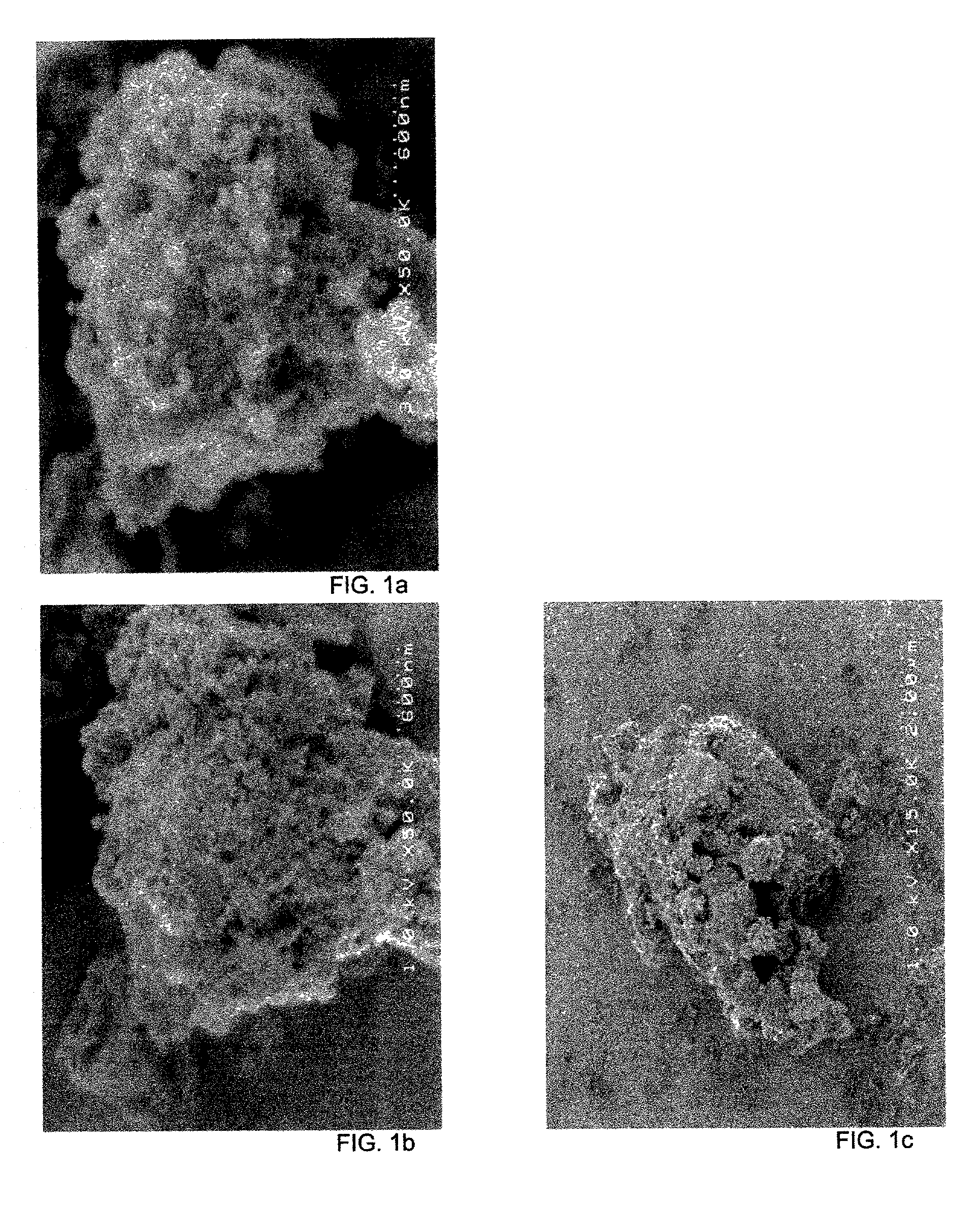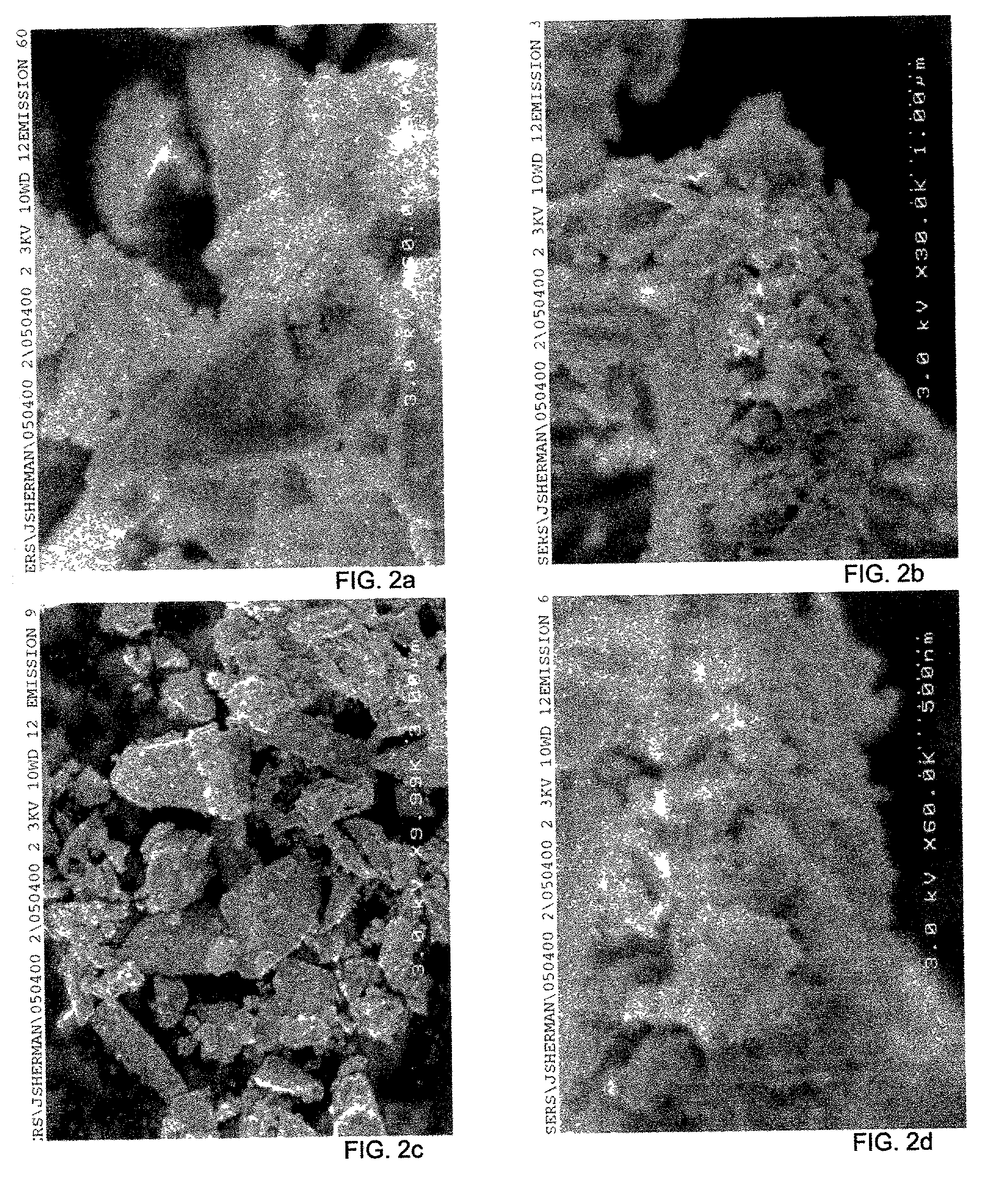Nanoparticulate titanium dioxide coatings, and processes for the production and use thereof
a titanium dioxide and nano-coating technology, applied in the field of photocatalytic particles and aggregates and coatings, can solve the problems of limited use of titanium dioxide nano-coatings, inability to meet the requirements of high-efficiency production and use,
- Summary
- Abstract
- Description
- Claims
- Application Information
AI Technical Summary
Problems solved by technology
Method used
Image
Examples
Embodiment Construction
of a Nanoparticulate Titanium Dioxide Coating, Particularly to Silicon Powder
[0189] An example of the process of the invention for the application of a nanoparticulate titanium dioxide coating is as follows. The example is for the application of nanoparticulate TiO2 coating to silica powder.
[0190] Additional required chemicals include (vi) Min-U-Sil 5 Silica, U.S. Silica.
[0191] 2.5 ml of HCl 0.15 M is mixed with 5 g silica powder (Minucel 5 from U.S. Silica, avg. particle size 1.4 microns) to create a slurry. 2.22 g titania sol from Example 1 is then added to the slurry. 10 ml NH.sub.4OH 0.1 M is then stirred into the titania-coated silica slurry to neutralize it to pH 7. The resulting slurry is then filtered, re-suspended in 25 ml water to rinse, and then filtered again. The resulting cake is then dried at 130.degree. C. for 30 minutes and then annealed at 650.degree. C. for 4.5 hours. The resulting powder is silica coated with approximately 1%by weight nanoparticulate TiO.sub.2. T...
PUM
| Property | Measurement | Unit |
|---|---|---|
| temperature | aaaaa | aaaaa |
| temperature | aaaaa | aaaaa |
| diameter | aaaaa | aaaaa |
Abstract
Description
Claims
Application Information
 Login to View More
Login to View More - R&D
- Intellectual Property
- Life Sciences
- Materials
- Tech Scout
- Unparalleled Data Quality
- Higher Quality Content
- 60% Fewer Hallucinations
Browse by: Latest US Patents, China's latest patents, Technical Efficacy Thesaurus, Application Domain, Technology Topic, Popular Technical Reports.
© 2025 PatSnap. All rights reserved.Legal|Privacy policy|Modern Slavery Act Transparency Statement|Sitemap|About US| Contact US: help@patsnap.com



